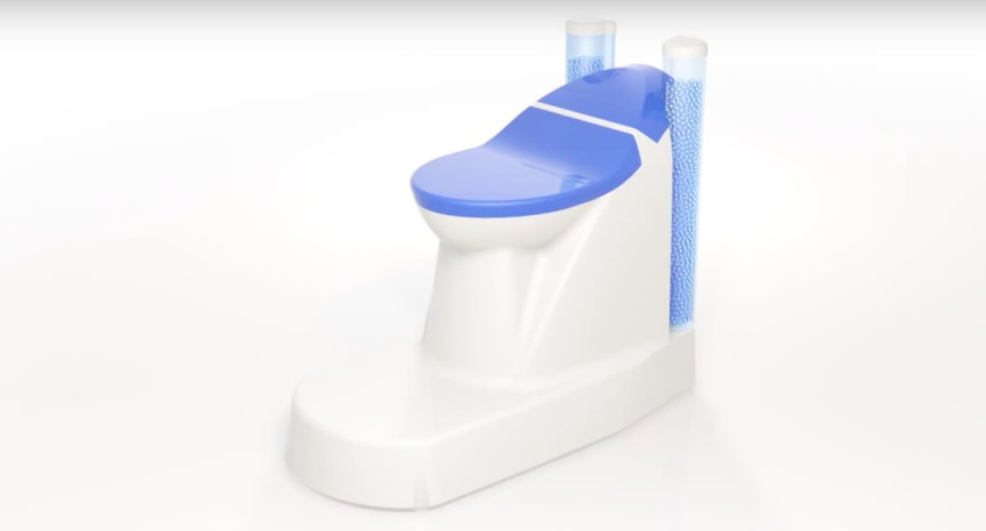Cranfield University is developing the Nano Membrane Toilet which will be able to treat human waste on-site without external energy or water. The toilet is designed for single-household use (equivalent to 10 people) and will accept urine and faeces as a mixture. The toilet is still under development; this is the vision of how it will work: The toilet flush uses a unique rotating mechanism to transport the mixture into the toilet without demanding water whilst simultaneously blocking odour and the user’s view of the waste.
Solids separation (faeces) is principally accomplished through sedimentation. Loosely bound water (mostly from urine) is separated using low glass transition temperature hollow-fibre membranes. The unique nanostructured membrane wall facilitates water transport in the vapour state rather than as a liquid state which yields high rejection of pathogens and some odorous volatile compounds. A novel nano-coated bead enables water vapour recovery through encouraging the formation of water droplets at the nanobead surface. Once the droplets form a critical size, the water drains into a collection vessel for reuse at the household level in washing or irrigation applications.
Following release of unbound water, the residual solids (around 20-25% solids) are transported by mechanical screw into a gasifier which will convert them into ash and energy. The energy will power the membrane processes, and there may be extra energy for charging mobile phones or other low voltage items.
“Any transformational technology must be aspirational, accessible and affordable, especially in isolated, marginalised areas.”- Carolynne Wheeler, WaterAid
The toilet will be rented by the households and maintenance will be undertaken with a trained operative responsible for the franchised area.
The water the toilet produces is potable, the researchers say. The only waste product is ash from the burning of the solid matter, which can be safely added to the household waste. The process may produce enough surplus energy to charge small appliances such as mobile phones, according to the inventors.
Carolynne Wheeler, lead author of a report by charity WaterAid on the state of the world’s toilets that was issued last week to mark World Toilet Day, says the design “could be promising in certain contexts such as in Nigeria — a middle-income country where the sanitation situation is regressing, even in urban areas”. Wheeler says some people would rather go outdoors than use a smelly room inside their house, so the new toilet’s odourless feature is attractive. “Any transformational technology must be aspirational, accessible and affordable, especially in isolated, marginalised areas,” she adds.
Trials of the Nano Membrane Toilet may be conducted with the Clean Team, a sanitation business in Ghana that has already helped research consumer interest in the toilet in the southern city of Kumasi.



